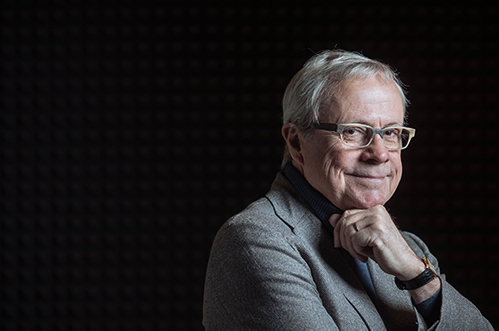If you’re like me, you might wish for a way to speed up the cycle of creativity, to accomplish something faster and with less uncertainty during the process. Unfortunately, I have not found that it works that way. But I have found that there are reliable actions you can take to keep the creative cycle moving forward, despite the times when you may not know what the final product will look like. My essay this month explores the success factors for getting to the “kernel” of any creative endeavor.
All my best,
The Creative Cycle
Recently a graphic artist was talking with me about his own creative process in coming up with designs for his clients. “At some point, I come up with the kernel. From there it all starts to piece together. Until then I’m a mess.” He got me thinking about “the kernel” — something I’ve experienced with every essay I’ve written, every purpose statement formulation I’ve facilitated, every new workflow configuration I’ve created with a client, and every real planning process I’ve been involved with.
The time and energy required for creating something goes through a cycle, one that is seldom as easy or as immediately evident and as clear as I would like to imagine it is. There is an initial framing — an impetus to create something, and a raw idea about how to express it. Then a step into the unknown. Then thinking. Then an expression of that thinking. Then a reflection upon that reflection. More thinking. Then pushing and pulling on pieces here and there. And nothing is quite working, quite yet, quite like I think it should. I get drowsy, looking for any excuse to do something else a lot easier. I question whether anything at all was valuable in the initial idea, or whether the process will really work (though it always has). I feel like I’ve fallen off the end of the some psychological pier, hanging on by a thread, wondering why I ever started down this path to begin with.
And somewhere, somehow, at some time, things start to make some sense. A key concept, supported by a set of ideas, starts to solidify. Everything starts to come together. Then there comes a point when I find myself over the crest, starting to coast downhill. I’m filling in the blanks, adding necessary detail, refining the expression until there is cohesion and completion of the work. “Aha!”s happen in and around the material.
This cycle is inherent in the thinking process of professional life, as well as more artistic expressions. A positive impetus pushes us into the frontier, we flounder in murky and unfamiliar territory, and at some point we reintegrate the experience into a new whole.
The Nature of the Creative Process
I still don’t know much intellectually about the nature of that creative process. What is the underlying principle at work here? Why do we seem to have to work so hard to get the kernel? And my interest in productivity causes me to ask how I can get to it faster, easier, more effectively, with less mess and the frustrations that often accompany it.
Perhaps it is enough to just understand that it works this way. Soups need to simmer. I have learned that there is an inherent rhythm to things that often cannot be compressed into less space and time. Creative expressions and thinking endeavors need room, and the ability for less-than-conscious parts of our internal computers (and perhaps our spirit) to do their magic.
Smart Placeholders
That’s why it is very smart to put some placeholder for the project out on front of the mind as soon as it begins to emerge on the radar — on a whiteboard, on a “Projects” list, on a blank canvas or piece of paper. It’s also good to do some creative focusing on it before the deadline is too close. That focus may not feel like a completion yet, but it will stir the subliminal stew, which just takes time to mature appropriately. Too many times I’ve waited until the last minute to do the thinking I really needed to apply, which requires more time, energy, and patience than I allowed myself.
The two success factors in the process of finding the kernel seem contradictory. First, I need a strong intention. If I just sit at the computer wanting to write something, my brain can stay barren for a long time. I must have some juices flowing about expressing something or achieving a result. Secondly, I have to let it flow, without too much forcing or pushing on it. High anticipation with no expectation is the best approach for creating anything, and a nice way to go through life. I know I can still improve my own behaviors and habits that make that a lot easier to implement.
The shrewd guess, the fertile hypothesis, the courageous leap to a tentative conclusion — these are the most valuable coin of the thinker at work.
—Jerome S. Bruner
This essay appeared in David Allen’s Productive Living Newsletter. Subscribe for free here.




Recent Comments